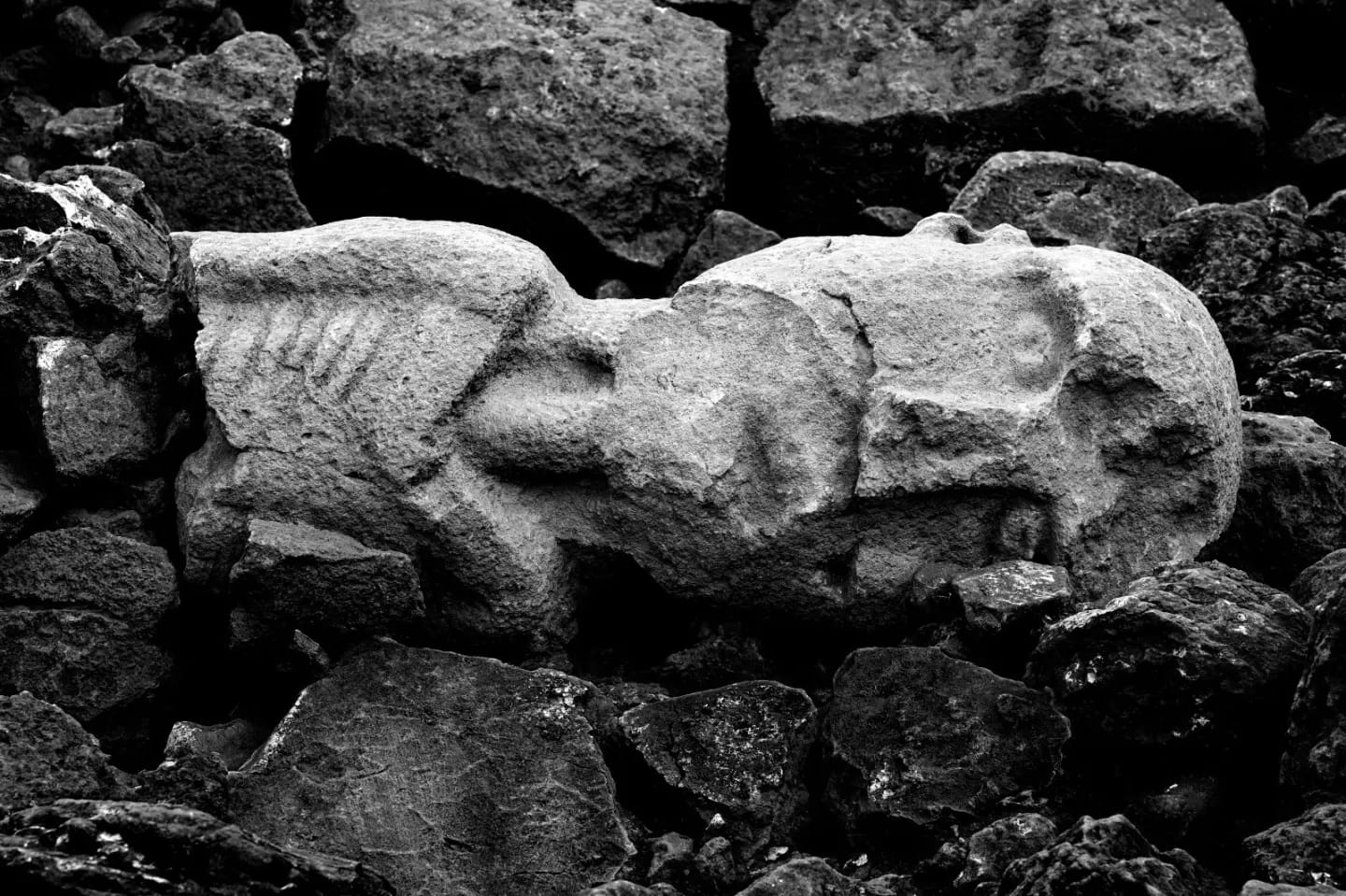Archaeology
Pigment residue suggests that the objects could be the oldest painted sculptures ever found.
One of the earliest examples of human sculpture has been found in Turkey at prehistoric sites believed by some to have ties to ancient biblical accounts.
The digs were carried out by the Turkish Ministry of Culture and Tourism, which announced the discovery of the statues, describing the objects as “most impressive examples” of prehistoric art.
An excavation carried out in Karahan Tepe turned up a human effigy that the ministry called “one of the most realistic sculptures of the period.” Measuring over seven feet tall, the sculpture emphasizes the ribs, spine, and shoulder bones of a man and has a realistic facial expressions.
The site dates back to around 9,400 B.C.E, which suggests that this work may be the oldest human statue of its kind ever found—even older than the Urfa Man that is dated ca. 9,000 B.C.E.
A statue of a vulture was also found nearby, officials said.
Karahan Tepe is located in Upper Mesopotamia, a region that saw the emergence of the most ancient farming communities in the world. It’s situated about 37 miles east of Şanlıurfa, which is believed by some to be the ancient city of Ur Kaśdim, also known as Ur of the Chaldeans. According to the ministry, the city is regarded as a holy site by Jews, Christians, and Muslims.
Many believe Şanlıurfa to be the birthplace of the Old Testament figure Abraham, known as Ibrahim in Islam. Abraham is considered the father of the three “Abrahamic” religions. Some also believe it is the birthplace of the biblical figure Job, though Job is largely considered to be an allegorical story.
Additionally, a life-sized statue of a wild boar made of limestone was found at the nearby site Göbekli Tepe, about 40 miles north of the Syrian border. The boar was was found with decorations that are thought to be an H-shaped symbol, a crescent, two snakes and three human faces or masks. Red, white and black pigment residues make it “the first painted sculpture found from that period to the present day,” the ministry said in a statement.
The site was first discovered in 1963 during a survey conducted by universities in Istanbul and Chicago; excavations started in 1995. It is best known for its megaliths that predate Stonehenge by some 6,000 years.
Some scholars, such as the Jerusalem-based Armstrong Institute of Biblical Archaeology, believe Göbekli Tepe could be tied to the biblical account of Noah. Michael Heiser, an Old Testament scholar, has noted that “fringe researchers” were quick to label it the site of the Garden of Eden while challenging the site as a temple complex.
“There are multiple temples in this place, which is not used as a residential area and serves only religious purposes. In this respect, it is considered not only the oldest but also the largest center of worship in the world,” according to the Turkish ministry of culture.
Dating to 9,600 B.C.E., Göbekli Tepe has been described as “the zero point of history.”
More Trending Stories:
The World’s Most Popular Painter Sent His Followers After Me Because He Didn’t Like a Review of His Work. Here’s What I Learned
Archaeologists Excavating the Tomb of Egypt’s First Female Pharaoh Found Hundreds of Jars Still Holding Remnants of Wine
The Second Paris+ Started With a Bang. Could Art Basel’s New Venture Unseat Its Flagship Fair One Day?
Is There a UFO in That Renaissance Painting? See 7 Historical Artworks That (Possibly) Depict Close Encounters With the Third Kind
A Glasgow Museum Reveals a $3.7 Million Rodin Sculpture Has Been Missing From Its Collection for Nearly 75 Years
What I Buy and Why: Art Entrepreneur Hélène Nguyen-Ban on Her Original ‘Art Crush’ and Owning a Half-Ton Book by Anselm Kiefer
Christie’s 20th/21st Century Evening Sale Notches Steady Results, a Feat in the Current Tepid Art Market
Four ‘Excellently Preserved’ Ancient Roman Swords Have Been Found in the Judean Desert
An Early Edition of an ‘Unhinged’ Christopher Columbus Letter Outlining What He Discovered in America Could Fetch $1.5 Million at Auction
Follow Artnet News on Facebook:
Want to stay ahead of the art world? Subscribe to our newsletter to get the breaking news, eye-opening interviews, and incisive critical takes that drive the conversation forward.
